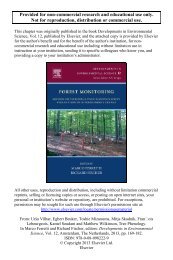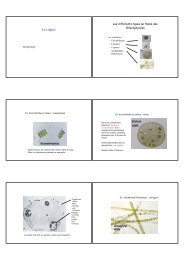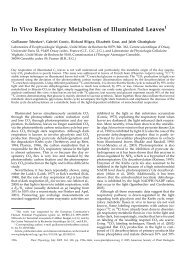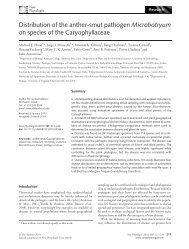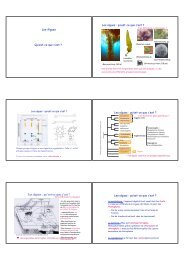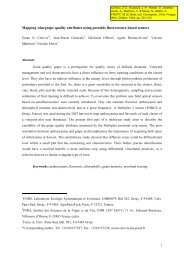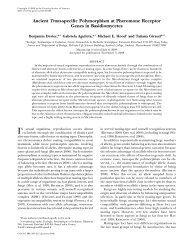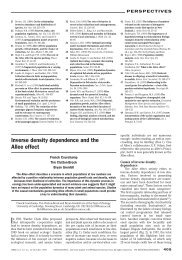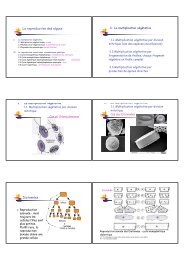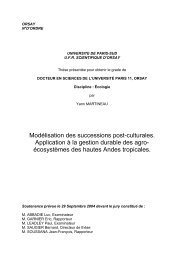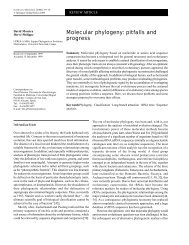Premiers - Outil de Suivi des Contrats
Premiers - Outil de Suivi des Contrats
Premiers - Outil de Suivi des Contrats
Create successful ePaper yourself
Turn your PDF publications into a flip-book with our unique Google optimized e-Paper software.
Annexe III<br />
_____________________________________________<br />
temperature-<strong>de</strong>pen<strong>de</strong>nt sex <strong>de</strong>termination species (Bull & Vogt, 1981; Mrosovsky & Pieau,<br />
1991). During the TSP, fluctuations of temperature influence sex differentiation, so an<br />
increase of the TSP may influence the sex of the embryo, irremediably <strong>de</strong>termined only at the<br />
end of the TSP (review in Pieau & Dorizzi, 2004). In this context, moisture conditions may<br />
indirectly influence sex <strong>de</strong>termination of the embryo. In our case, we could not <strong>de</strong>tect a<br />
possible effect of moisture substrate on sex partly because we performed our experiment at<br />
constant incubation temperature. This points out the importance to use incubations conditions<br />
that are ecologically relevant (i.e. fluctuating water potentials and temperatures) in laboratory<br />
studies.<br />
Hatchling and yearling mass<br />
Most of studies have suggested that effects of incubation environment (temperature and<br />
moisture) may influence the pattern of selective process of phenotypic traits affecting<br />
individual fitness (Gutzke et al., 1983; Morris et al., 1983; Miller, Packard & Packard, 1987;<br />
Finkler, 1999; Packard et al., 1999b; Angilletta et al., 2000). Hatchling mass was often<br />
proposed as affecting a component of lifetime fitness in turtles, with larger hatchlings<br />
supposed to have an advantage over smaller individuals (i.e. the “bigger is better hypothesis”;<br />
(see Miller et al., 1987; Packard & Packard, 1988; see Janzen, 1994)). This hypothesis<br />
consi<strong>de</strong>rs hatchling mass as a good in<strong>de</strong>x of hatchlings quality: larger individuals may have a<br />
better survival rate (Janzen, 1993; Janzen, Tucker & Paukstis, 2000; Kolbe & Janzen, 2002).<br />
In our experiment, we <strong>de</strong>tect a significant and positive correlation between hatchling mass<br />
and the time spent by eggs on wet substrate during incubation (Figure 3.b). We also showed a<br />
positive relation between initial egg mass and mass of hatchlings (Figure 3.a). Moreover,<br />
moisture substrate influences the mass of hatchling turtles in interaction with the initial mass<br />
of the eggs (Table 2.3). Finally, hatchling mass varied also significantly among clutches,<br />
16



